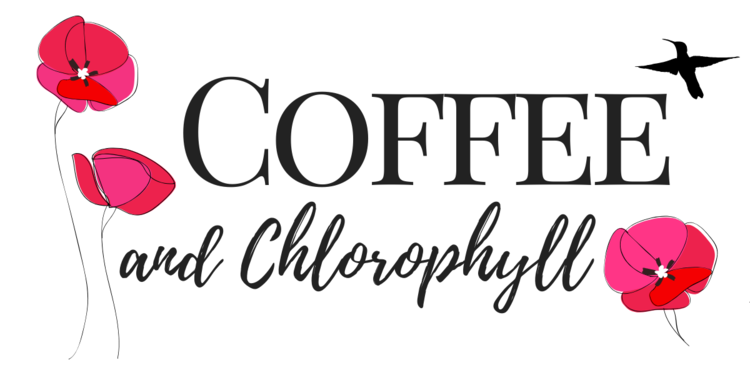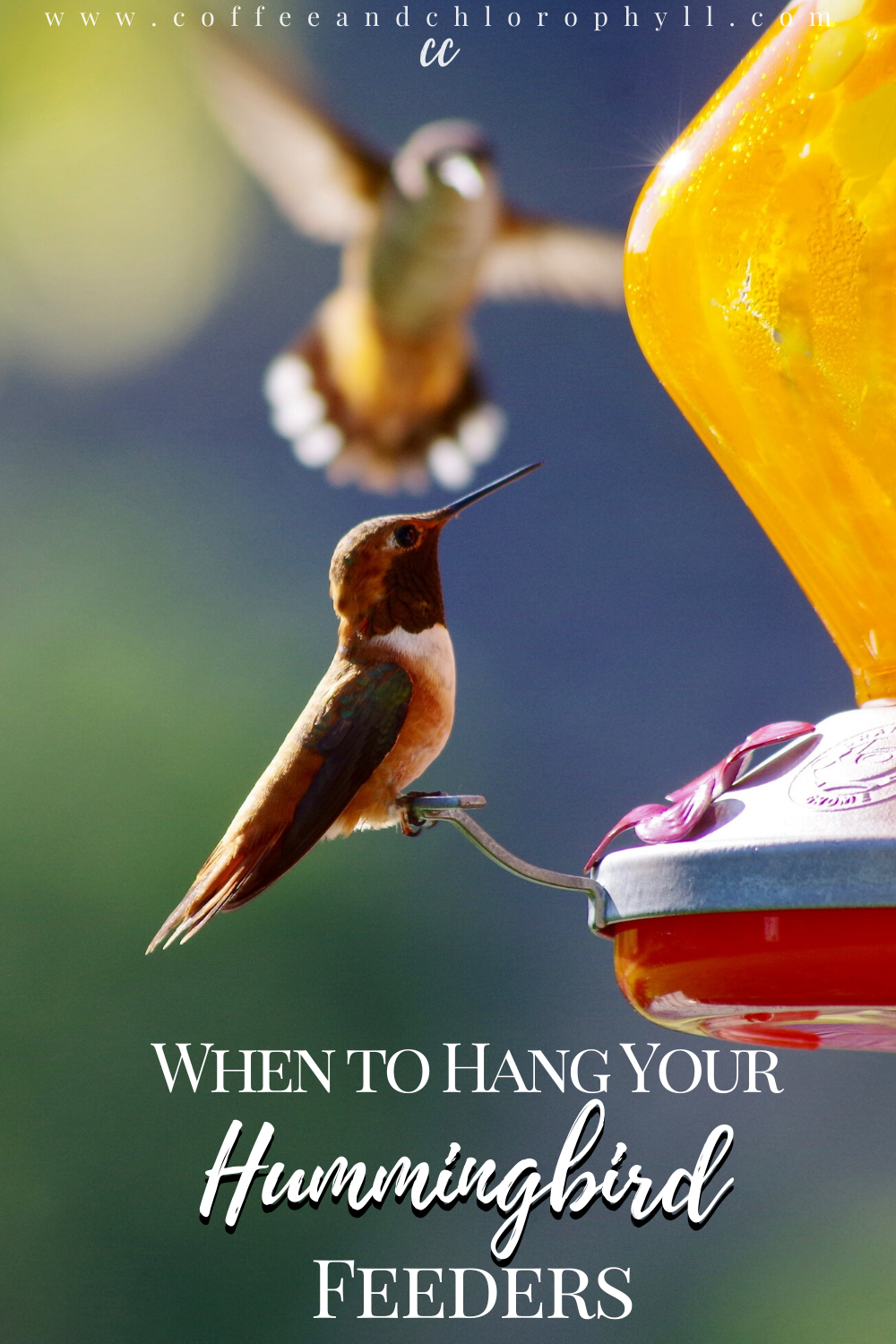Spring Migration is in full swing, here in Wyoming, but my favorite birds have not yet winged their way to my backyard. When they do, however, I plan on being ready for them, so they stick around. With that said, this week, I am hauling out my hummingbird feeders, filling them with sugar water, and hanging them in anticipation for the return of my hummingbirds.
Most hummingbirds migrate in the Spring, and then again in the Fall. In Spring, they migrate north to their breeding grounds all over North America, after having over-wintered in Mexico & Central America. Many hummingbirds start their journey north in February, following the bloom cycles of flowers, which provide nectar to fuel their migration. They travel by day, unlike many migratory birds that travel at night, so they can scout out food sources by sight along the way. If you want to provide them a valuable refueling station and catch the attention of the breeding hummingbirds in your area, then you need to have your feeders out by the time they reach you. If you are lucky, they will spot your feeder and become a repeat visitor. Many hummingbirds have incredible spatial memory—often remembering the exact location of certain flowers and feeders for many years to come. So your migratory hummingbirds from this spring might stop by on their way south in the fall, or even next spring, and your resident hummingbirds, or breeding hummingbirds from this summer, will probably be back to breed again next summer.
How to Know When to Hang your Hummingbird Feeders
The easiest way to determine when you should hang your hummingbird feeders back up largely depends on where you live.
West Coast, Desert Southwest, Florida, and the Gulf Coast: If you live on the West Coast, in California all the way up to Canada, or somewhere in the desert Southwest, you are likely to have year-round hummingbirds such as Anna’s Hummingbirds (North) or Allen’s Hummingbirds (South), that have become year-round residents to your area and have no need to migrate to central America for winter. This same principal applies to some parts of Florida and the Gulf Coast, except with Ruby-Throated Hummingbirds. If you have year-round hummingbirds, then anytime is a good time to hang your feeders. These areas still experience flushes of other migratory hummingbird species in the spring & fall. Back when I lived in California, the Rufous Hummingbirds always migrated through in February.
Eastern North America: In the eastern United States, all the way up into central Canada, there are Ruby-Throated Hummingbirds. These neotropical migrants enter North America via the Gulf Coast in March and slowly work their way all the way up into Canada by about May. As a general rule of thumb, if you live in the Southeast, plan on having your feeder up by March; if you live in the Northeast, plan on having your feeder up some time in April.
Mountain West: If you live in the mountain west, like I do (Idaho, Utah, Colorado, Montana, Wyoming, etc), then you are lucky because we get to experience a whole array of beautiful hummingbird species, including Calliope, Black-Chinned, Broad-tailed, and Rufous. When they arrive in your region will depend largely on how far North you live. They don’t get to my yard, in Wyoming, until the end of April or early May.
If you want to pinpoint an even more accurate date of return, then you can do so by using historical dates of when the hummingbirds return to your area. If you know their average return date, then you can have hummingbird feeders hung one to two weeks before that date, in case they get back a little bit earlier. At our last house, the hummingbirds almost always showed up around May 4th or 5th. Knowing this, I would haul the feeders out at the end of April. Of course I had the advantage of knowing when they returned because I had fed them consistently for a few years. If you are new to feeding hummingbirds, then you probably are not likely to know when they return. No problem, though—now is actually one of the best times to start feeding hummingbirds! I have a great resource you can use to determine when they will be migrating through your neck of the woods, so you can be ready with a feeder when they get there!
Hummingbird Central
Hummingbird Central is a wonderful resource to refer to if you are interested in hummingbirds. Their website has an awesome section on Hummingbird Migration. It includes information about migration, as well as an interactive Hummingbird Sightings Maps for each year, in which users can report their first hummingbird sightings of spring. They also keep a map of historical hummingbird sightings, which is super helpful in knowing when you should hang your hummingbird feeders in your area. To access their map of previous sighting you can follow this link: 2014-2019 Hummingbird Spring Migration Interactive Map or refer to the map I’ve embedded below. By clicking on the menu icon in the top left corner of the blue information bar, you can select a year to look at. Then you can zoom into you area, and start clicking on some of the little hummingbird icons. They will tell you what kind of hummer was sighted, when, and where. There aren’t sightings for every city, but you can see their northward & inward movement, and click on a hummingbird icon near where you live to see when it was sighted. Using these dates, you can get a good estimate of when they are likely to come through your area.
Where are the Hummingbirds Now?
If you already have your hummingbird feeders hung in eager anticipation for their return, you can use this Year’s Map of Hummingbird Sightings to track how far North the hummingbirds have come, so far. And also, when you spot your first hummingbird, you can get your sighting added to this year’s spring migration map!
Your First Hummingbird Sighting of Spring
The data in these maps will continue to improve throughout the years, especially if you take the time to add your first hummingbird sighting of Spring to Hummingbird Central. It is very easy to do—just fill out this simple online form:
Submit Your First Hummingbird Sighting HERE
Last Year’s First Hummingbird to visit my yard was a beautiful male Broad-Tailed Hummingbird on May 5th
How Long to Leave Your Hummingbird Feeders Hanging
Spring migration and fall migration are both important for hummingbirds. Ideally, you should get your feeders hung before the hummingbirds migrate through your area in the Spring, and leave them up until after they migrate through your area in the Fall. I try to leave at least one feeder out for 2-3 weeks after I see the last one pass through. That way if there are an late-comers, they have a spot to refuel on their journey south, especially at a time when there aren’t as many natural nectar sources—flowers. And if you are one of the folks who are lucky enough to live in an area with year round hummingbirds, leave your feeders up all year round. In winter, especially if temperatures are lower, you may find the nectar lasts a bit longer. Plus, when nights are chilly and nectar sources aren’t as plentiful, the sugar water in your feeders will be even more valuable to your year-round hummers.
Anytime is a Good Time to Feed Hummingbirds
If you are finding this well after the hummingbirds have returned to your area for Spring & Summer, it’s not too late to put out a hummingbird feeder. It’s never too late (unless they’ve already headed south for winter)! Many hummingbirds will still successfully find and utilize a hummingbird feeder, even if it's not offered until midsummer or fall. Don’t be discouraged if they don’t find you right away. Just like any bird feeding, sometimes it takes time for the birds to find your feeder. Just be sure to offer a steady supply of clean nectar for your hummingbirds. This means cleaning your hummingbird feeders and changing the sugar water solution (4 parts water:1 part sugar until dissolved) out regularly—even if none have found your feeder yet! In summer, depending on how warm your climate is, this can be necessary 2-3 times per week, if temperatures are above 100 degrees F or if you are noticing any mold growth, black spots, or cloudiness.


